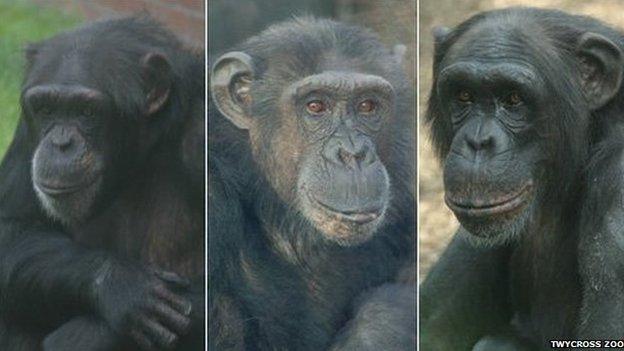Gibbon Forest unveiled at Twycross Zoo
- Published
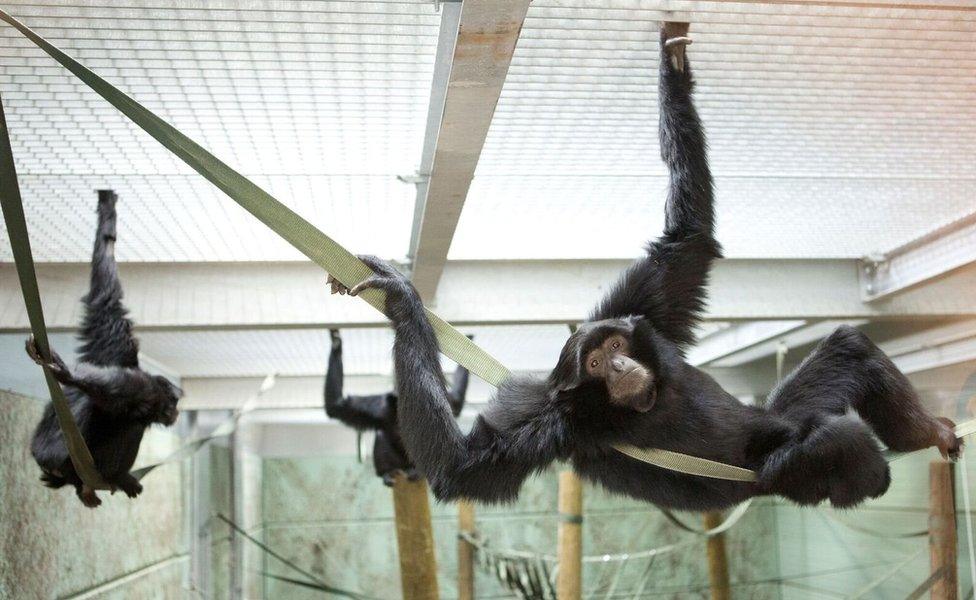
The new gibbon enclosure has a height of about 4m (13 ft)
A "world class" enclosure for endangered gibbons has been unveiled at a zoo in Leicestershire.
Twycross Zoo said its new £2m Gibbon Forest will help the apes display more natural behaviour and encourage breeding to help save the species.
The zoo has one of the largest gibbon collections in Europe and includes the Northern White-Cheeked Crested species, which is facing possible extinction, external.
The new design gives the animals enough room to swing for about 30m (98.4 ft).
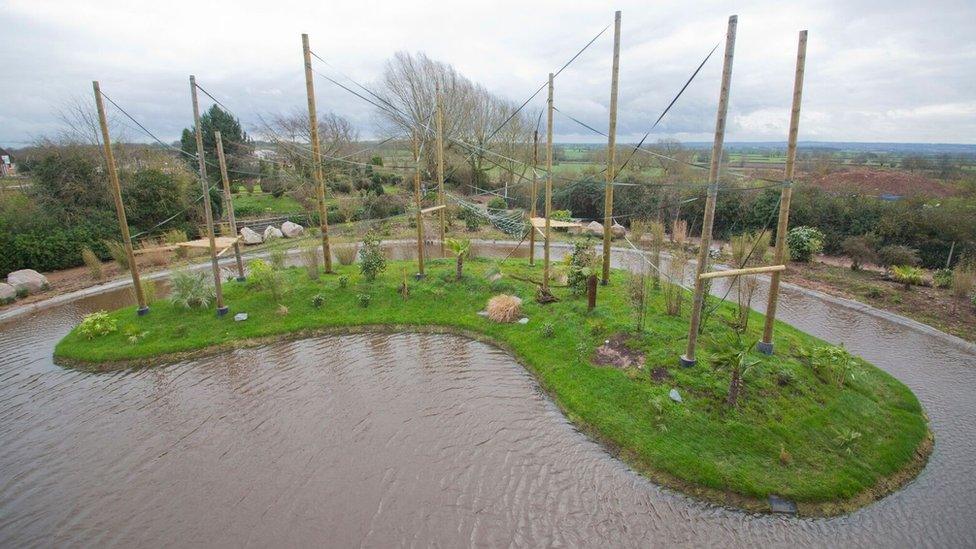
The gibbons are able to swing for about 30m (98.4 ft) across manmade islands
Dr Sharon Redrobe, Twycross Zoo's chief executive, said the enclosure, which has a series of pods and islands, will allow "gibbons to be gibbons" and reduce the amount of interaction they have with humans.
"We needed a world class habitat," Ms Redrobe said.
"The space is 10 times as much as they had before and so allows the zoo to keep them in bigger groups.
"They can live into their fifties and, for the first time, we will be able to keep two or three generations together."
She added that the gibbons were overawed by their new surroundings and it took the normally booming Siamang gibbons a week before they started to sing.
Gibbon Forest
Building an ape world
55,000
Tonnes of earth moved
-
8,000 Tonnes of imported stone
-
2,296 Feet of drainage
-
4,921 Feet of electric cable
-
155 Tonnes of steel
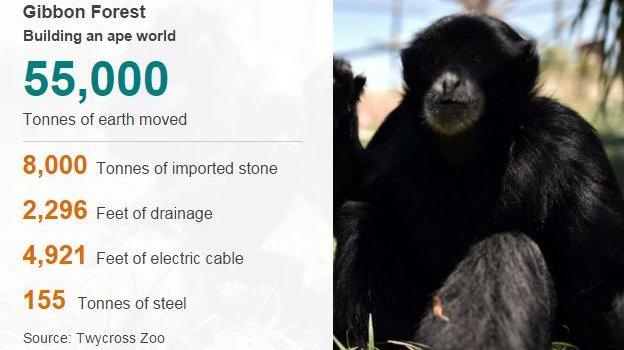
The gibbons are integral to the European Association of Zoos and Aquaria (EAZA) breeding programme, designed to keep the captive population viable.
Ms Redrobe said gibbons pair for life but are "slow breeders" and need the best conditions to reproduce.
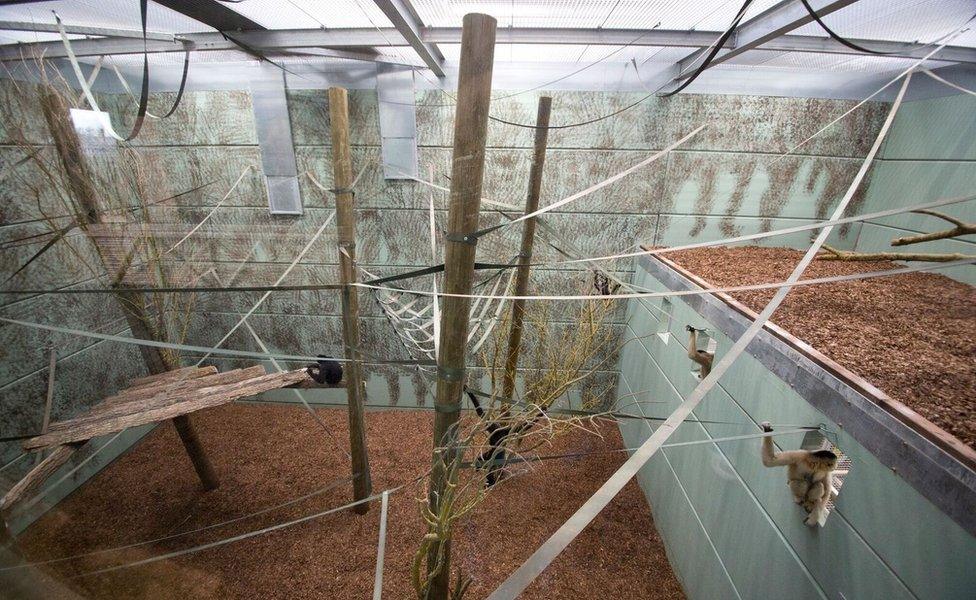
Visitors are now able to view the gibbons at height
The apes are endangered in their natural habitat in South East Asia due largely to deforestation.
Gibbon Forest is part of a £55m upgrade at the zoo, which will include a modern chimpanzee facility.
The 63-year-old attraction has about 500,000 visitors a year.

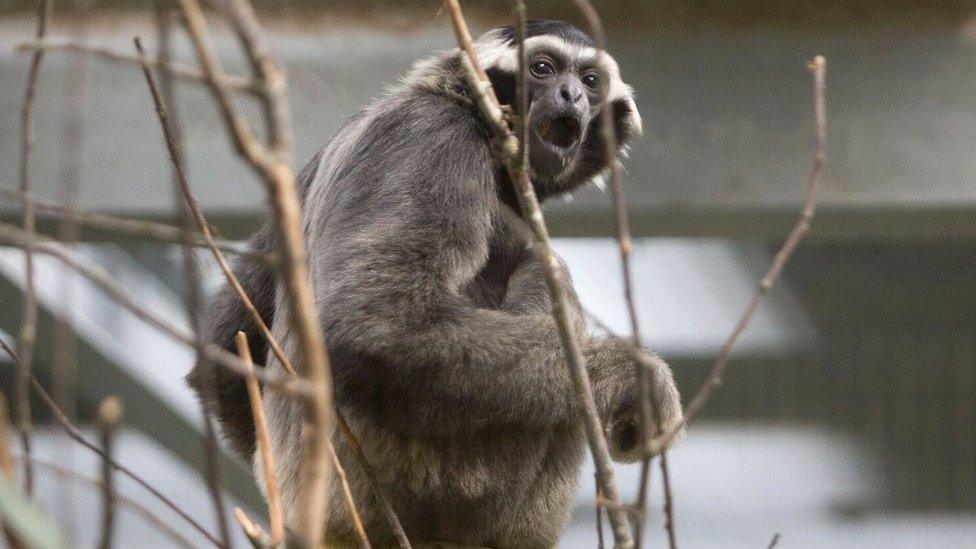
The zoo hope a more natural habitat will help the apes to breed
Designed for life
The new enclosure is about an acre (4,046 sq m) in size
The design allows visitors to view from the second floor where the apes are likely to be exploring a replicated treetop canopy
The ground floor is 2.5m deep with bark chips which will naturally rot and help increase the humidity - akin to a more natural temperature
To reduce human interaction, the animals can collect food through timed release feeders and through a mesh roof, where they can pull through food
The design gives the gibbons room to swing for about 30m above islands and moats

- Published27 June 2013

- Published10 March 2015
